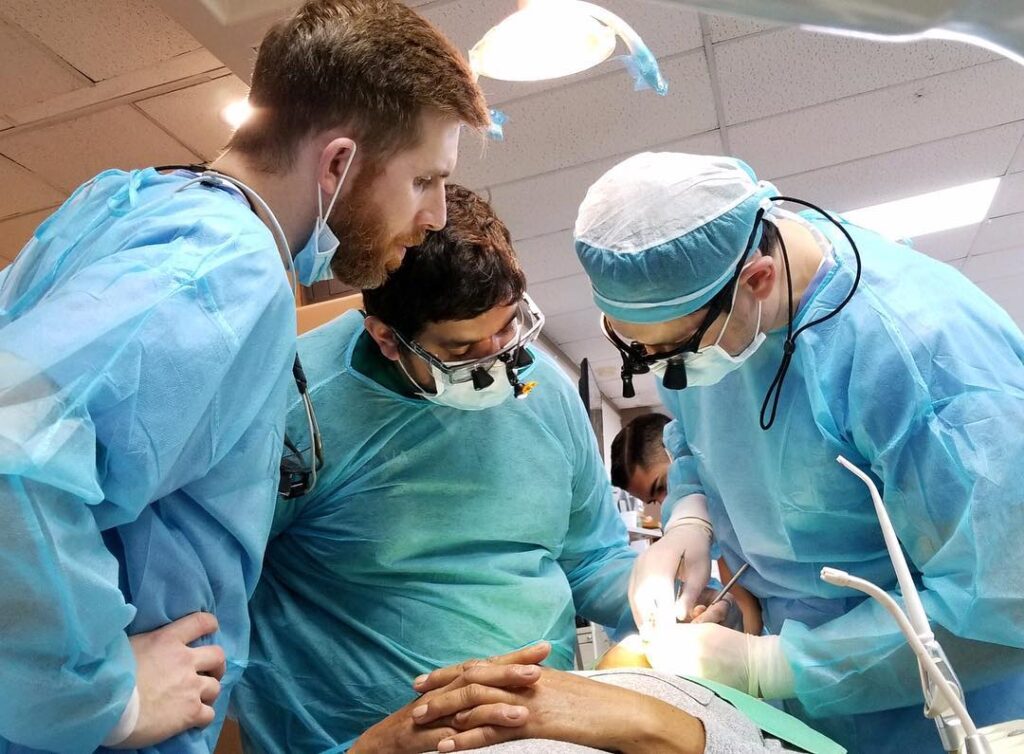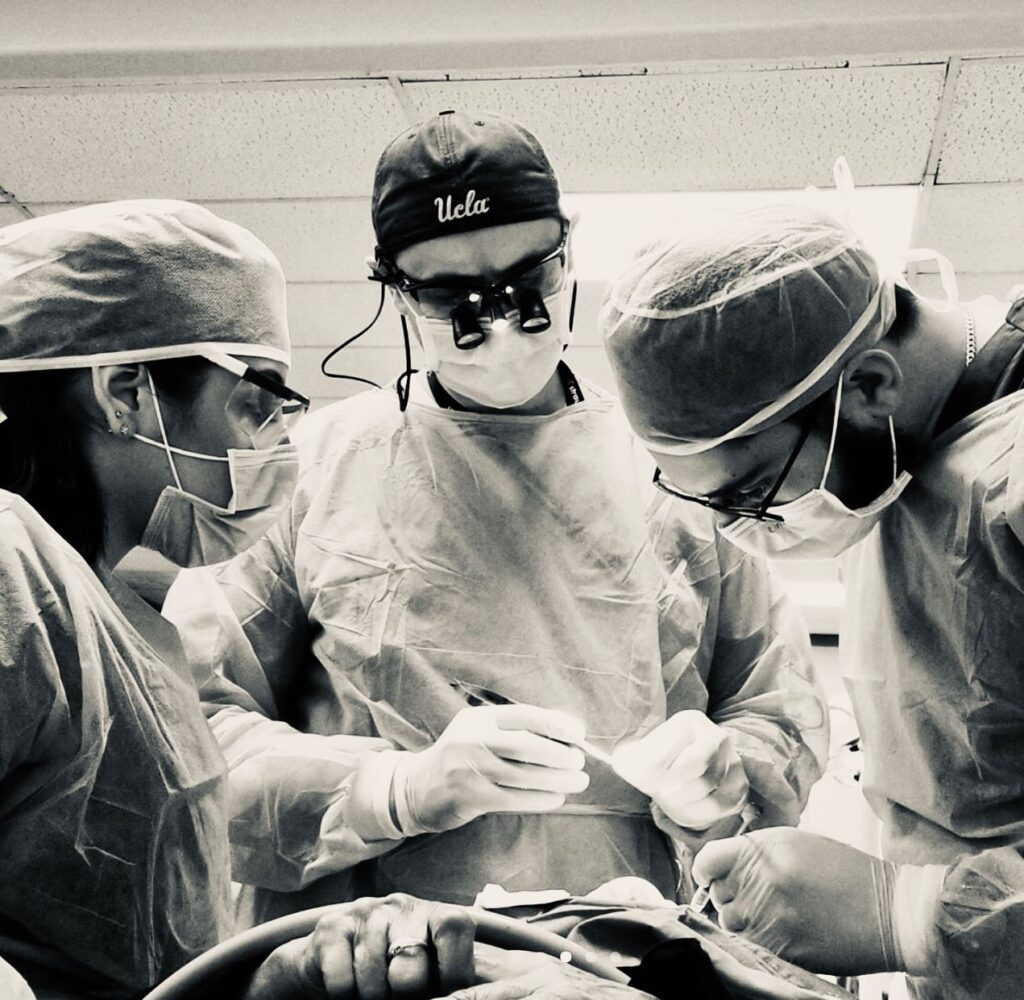Periodontal Disease Treatment
What is Periodontal Disease?
Periodontal diseases, more commonly known as gum diseases, are a form of chronic bacterial infections that affect the gums and supporting structures of the teeth. These conditions can vary in severity, from mild gum inflammation known as gingivitis to more advanced stages that cause significant damage to the soft tissues and bone surrounding the teeth. It is crucial to get periodontal diseases treated otherwise if left untreated, they can lead to tooth loss.

Symptoms of periodontal disease include:
- Red, swollen, or tender gums
- Bleeding gums when brushing or flossing
- Receding gums, which can make the teeth appear longer
- Loose or shifting teeth
- Persistent bad breath
- Changes in the way your teeth fit together when you bite down

0
+
Happy Client

0
+
Year Experience
0
+
Daily Clients

0
+
Online Appointment
Causes of Periodontal Diseases
The primary cause of periodontal disease is the buildup of plaque, a sticky film of bacteria that forms on the teeth. When plaque is not removed by regular brushing and flossing, it can harden into tartar, which can only be removed by a dental professional. Over time, the bacteria in the plaque and tartar can infect and inflame the gums, leading to periodontal disease.


Stages of Periodontal Diseases
Gingivitis is the initial stage of periodontal disease, marked by red, swollen, and bleeding gums. It affects only the gum tissues and can be reversed with treatment and improved oral hygiene.
If gingivitis goes untreated, it can progress to periodontitis, a more advanced and destructive stage. Periodontitis involves infection spreading beneath the gum line, damaging the periodontal ligament, alveolar bone, and supporting tissues. Gums may recede, forming pockets where bacteria thrive, leading to bone loss, tooth mobility, and potential tooth loss.
Stages of Periodontal Diseases
Gingivitis is the initial stage of periodontal disease, marked by red, swollen, and bleeding gums. It affects only the gum tissues and can be reversed with treatment and improved oral hygiene.
If gingivitis goes untreated, it can progress to periodontitis, a more advanced and destructive stage. Periodontitis involves infection spreading beneath the gum line, damaging the periodontal ligament, alveolar bone, and supporting tissues. Gums may recede, forming pockets where bacteria thrive, leading to bone loss, tooth mobility, and potential tooth loss.

Treatment of Periodontal Disease with Osseous and Regenerative Surgery
Osseous surgery and regenerative surgery are two common treatments for advanced periodontal disease. These procedures are typically recommended when nonsurgical treatments, such as scaling and root planing, are insufficient to manage the infection and prevent further damage to the gums and teeth.


Osseous Surgery/Pocket Reduction Surgery
Osseous Surgery focuses on reducing the depth of periodontal pockets, which are spaces that form between the gums and teeth due to gum disease. During the procedure, Dr Ivanov uses specialized tools to remove any damaged or infected tissue and reshape the bone to promote healing and prevent further damage. Once the surgery is complete, the gum tissue is stitched back into place and allowed to heal. By reducing pocket depths, osseous surgery promotes gum reattachment and creates a more favorable environment for oral hygiene maintenance.
Osseous Surgery/Pocket Reduction Surgery
Osseous Surgery focuses on reducing the depth of periodontal pockets, which are spaces that form between the gums and teeth due to gum disease. During the procedure, Dr Ivanov uses specialized tools to remove any damaged or infected tissue and reshape the bone to promote healing and prevent further damage. Once the surgery is complete, the gum tissue is stitched back into place and allowed to heal. By reducing pocket depths, osseous surgery promotes gum reattachment and creates a more favorable environment for oral hygiene maintenance.
Regenerative Surgery (Guided Tissue Regeneration)
Regenerative surgery, specifically guided tissue regeneration (GTR), is an advanced dental procedure designed to restore and regenerate the damaged supporting structures of the teeth caused by periodontal disease.
During the procedure, Dr Ivanov will place a small piece of bone graft material or a membrane in the area where the bone has been lost. Over time, the graft material will fuse with the existing bone, helping to regenerate lost tissue and support the teeth.Regenerative surgery may also involve the use of growth factors or other biological materials to help stimulate tissue regeneration and promote healing.Both osseous surgery and regenerative surgery can be effective treatments for advanced
periodontal disease. Dr. Ivanov can evaluate your oral health and recommend the most.
appropriate treatment for your individual needs.
Regenerative Surgery (Guided Tissue Regeneration)
Regenerative surgery, specifically guided tissue regeneration (GTR), is an advanced dental procedure designed to restore and regenerate the damaged supporting structures of the teeth caused by periodontal disease.
During the procedure, Dr Ivanov will place a small piece of bone graft material or a membrane in the area where the bone has been lost. Over time, the graft material will fuse with the existing bone, helping to regenerate lost tissue and support the teeth.Regenerative surgery may also involve the use of growth factors or other biological materials to help stimulate tissue regeneration and promote healing.Both osseous surgery and regenerative surgery can be effective treatments for advanced
periodontal disease. Dr. Ivanov can evaluate your oral health and recommend the most.
appropriate treatment for your individual needs.

Restore Your Smile, Rebuild Your Confidence
Dr. Ivanov’s expertise and personalized approach can help you regain a healthy smile and prevent further damage. Contact us now to schedule your appointment and reclaim your oral health.

